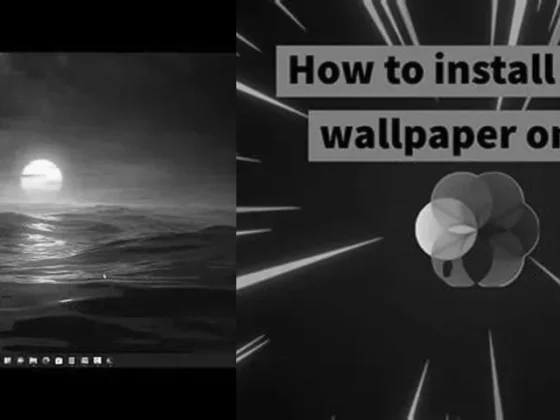Can I Connect My Chromebook to My TV? A Comprehensive Guide to Wired and Wireless Connections for Optimal Viewing Experience – Are you tired of squinting at your Chromebook screen while trying to watch your favorite shows or movies? Well, fret no more! In this comprehensive guide, we will show you how to connect your Chromebook to your TV and transform your viewing experience. Whether you prefer wired connections or wireless streaming, we’ve got you covered. So grab your popcorn and get ready to learn the ropes of connecting your Chromebook to your TV in no time. Get ready to sit back, relax, and enjoy the big screen from the comfort of your couch. Can I connect my Chromebook to my TV? Absolutely! Let’s dive in and find out how.
Wired Connections: HDMI and More
When it comes to connecting your Chromebook to a TV, the most common method is through a wired connection. There are several ports that facilitate this, and understanding your options is crucial. Let’s explore the possibilities.
The Versatility of HDMI
HDMI, short for High-Definition Multimedia Interface, is the most widespread port for transmitting both video and audio through a single cable. If your Chromebook and TV both have HDMI ports, simply use an HDMI cable to connect the two. It’s a straightforward process: plug one end into your Chromebook’s HDMI port and the other into your TV’s HDMI input.
Other Port Options
But what if your Chromebook or TV doesn’t have an HDMI port? No need to worry; there are other ports such as DisplayPort, DVI, VGA, and USB-C that can come to the rescue. Each of these ports has its own specifications and may require different cables or adapters. So, if your devices don’t match, make sure you have the correct adapter at hand. For example, if you need to connect to a VGA port on your TV, you’ll need an HDMI (male) to VGA (female) adapter. Remember, these adapters are directional, so ensure you purchase one that converts from HDMI to VGA, not the other way around.
Setting Up the External Display
Once you’ve connected your Chromebook to your TV, there are a couple of things to check. First, ensure that your TV is powered on. Next, verify that it’s set to the correct input source that corresponds with the port you’ve used for connection. If all is set correctly, you should see your Chromebook’s background or desktop on your TV screen.
Using USB-C for Video Output
Modern Chromebooks often come equipped with USB-C ports, which can carry video signals. If your Chromebook features a USB-C port but your TV does not, you can use a USB-C dongle with an HDMI output to bridge the gap. Connect the dongle to your Chromebook, and then an HDMI cable from the dongle to your TV. This solution is particularly handy for newer Chromebooks and TVs with multiple connection options.
Wireless Streaming with Chromecast and Android TV
Wires can be cumbersome, and sometimes you simply want to connect your devices wirelessly. Chromebooks offer a seamless solution for this with built-in support for Chromecast streaming.
Chromecast: No Additional Setup Required
With Chromecast functionality inherent in Chromebooks, there’s no need for extra setup. If you’ve got a Chromecast device or a TV with Chromecast built-in, you’re ready to start streaming. Both your Chromebook and the Chromecast device must be on the same Wi-Fi network for this to work.
Streaming to Android TV
Similarly, if you have an Android TV, you can connect your Chromebook wirelessly, provided both are on the same Wi-Fi network. This integration allows for a seamless casting of content from your Chromebook to your TV screen, making it ideal for presentations, watching videos, or browsing the web on a larger display.
Step-by-Step Guide to Connecting Your Chromebook to a TV
Let’s break down the connection process into simple, actionable steps to ensure you can easily mirror or extend your Chromebook’s display to your TV.
Using an HDMI Connection
- Locate the HDMI port on your Chromebook and TV.
- Connect one end of the HDMI cable to your Chromebook.
- Connect the other end to an available HDMI input on your TV.
- Turn on your TV and switch the input source to the correct HDMI port.
- Your Chromebook’s screen should now appear on the TV. If not, check the connections and ensure both devices are powered on.
Employing an Adapter for VGA Connection
- Acquire the correct HDMI to VGA adapter.
- Connect the HDMI end of the adapter to your Chromebook.
- Connect a VGA cable to the female end of the adapter and the other end to your TV’s VGA port.
- Switch your TV to the VGA input source.
- Adjust your Chromebook’s display settings if necessary to ensure the screen is displayed correctly on your TV.
Wireless Connection via Chromecast
- Ensure your Chromebook and Chromecast or Android TV are connected to the same Wi-Fi network.
- On your Chromebook, open the Chrome browser or any app that supports casting.
- Look for the cast icon, which typically appears in the video player or in the browser’s menu bar.
- Select your Chromecast or Android TV from the list of available devices.
- The content should now appear on your TV screen.
Troubleshooting Common Connection Issues
Despite following instructions, you might encounter some hiccups when connecting your Chromebook to your TV. Here are some tips to troubleshoot common issues.
When the Display Doesn’t Appear
If your TV screen remains blank after connecting your Chromebook:
- Check that the TV is powered on and set to the correct input.
- Double-check the cable connections to ensure they’re secure.
- Try a different HDMI port on your TV, as some ports may not be functioning correctly.
- Restart your Chromebook and TV to reset the connection.
Issues with Adapters and Dongles
When using an adapter or dongle:
- Ensure the adapter is properly connected, with the correct input and output ends matched to the corresponding devices.
- Verify that the adapter or dongle supports the Chromebook’s operating system.
- If possible, test the adapter with another device to rule out a fault in the adapter itself.
Wireless Connection Difficulties
For wireless streaming issues:
- Check that both devices are on the same Wi-Fi network.
- Reboot your router to refresh the network connection.
- Update your Chromebook’s operating system to ensure compatibility with the latest Chromecast features.
- Restart the Chromecast or Android TV device to clear any temporary connection problems.
Optimizing Your Viewing Experience
Once you have successfully connected your Chromebook to your TV, you might want to adjust the settings for an optimal viewing experience. Here’s how you can enhance the audio-visual quality.
Adjusting Display Settings
If the display on your TV doesn’t look quite right, you can adjust the settings on your Chromebook. Go to the display settings and experiment with the resolution and orientation options. You can also choose to extend your display, giving you a second screen to work on, or mirror your display, which is ideal for sharing content with others.
Improving Sound Quality
For sound, ensure that the audio output is set to your TV. This can also be done in the settings on your Chromebook. If the sound quality isn’t up to par, consider using an external sound system connected to your TV for a more immersive audio experience.
Conclusion
Connecting your Chromebook to your TV can expand your viewing and entertainment options significantly. Whether you’re using a wired HDMI connection, an adapter for older TV inputs, or taking advantage of wireless streaming through Chromecast or Android TV, the process is relatively simple. By following the steps outlined in this guide and troubleshooting any issues that arise, you’ll be able to enjoy your Chromebook’s content on a larger screen in no time.
FAQ & Related Questions about Connecting a Chromebook to a TV
Q: Can I use my TV as a monitor for my Chromebook?
A: Yes, you can effortlessly connect your Chromebook to a TV wirelessly if you have an Android TV and both devices are on the same Wi-Fi network. Chromebooks inherently support Chromecast streaming, so no additional setup is required.
Q: Can I mirror my Chromebook to my Smart TV?
A: Yes, you can mirror your Chromebook to your Smart TV by connecting a Chromecast device to your TV. Ensure that your Chromebook software is updated to the latest version and that the TV is turned on. To cast from a browser, simply open the webpage you want to cast.
Q: How can I connect my Chromebook to my TV?
A: You can connect your Chromebook to a monitor or TV using various ports such as HDMI, DisplayPort, DVI, VGA, or USB-C. To display your Chromebook on your TV, you can use an HDMI (male) to VGA (female) adapter. Make sure the external display is powered on and set to the correct input.
Q: What type of adapter do I need to connect my Chromebook to a VGA display?
A: To connect your Chromebook to a VGA display, you will need an HDMI (male) to VGA (female) adapter. It is important to purchase an adapter that converts HDMI to VGA, not the other way around.
Q: How do I ensure my Chromebook is properly connected to my TV?
A: To ensure a proper connection between your Chromebook and TV, make sure the external display has power, is turned on, and is set to the correct input. Once connected, you should see your Chromebook’s background or desktop graphic on the TV.


